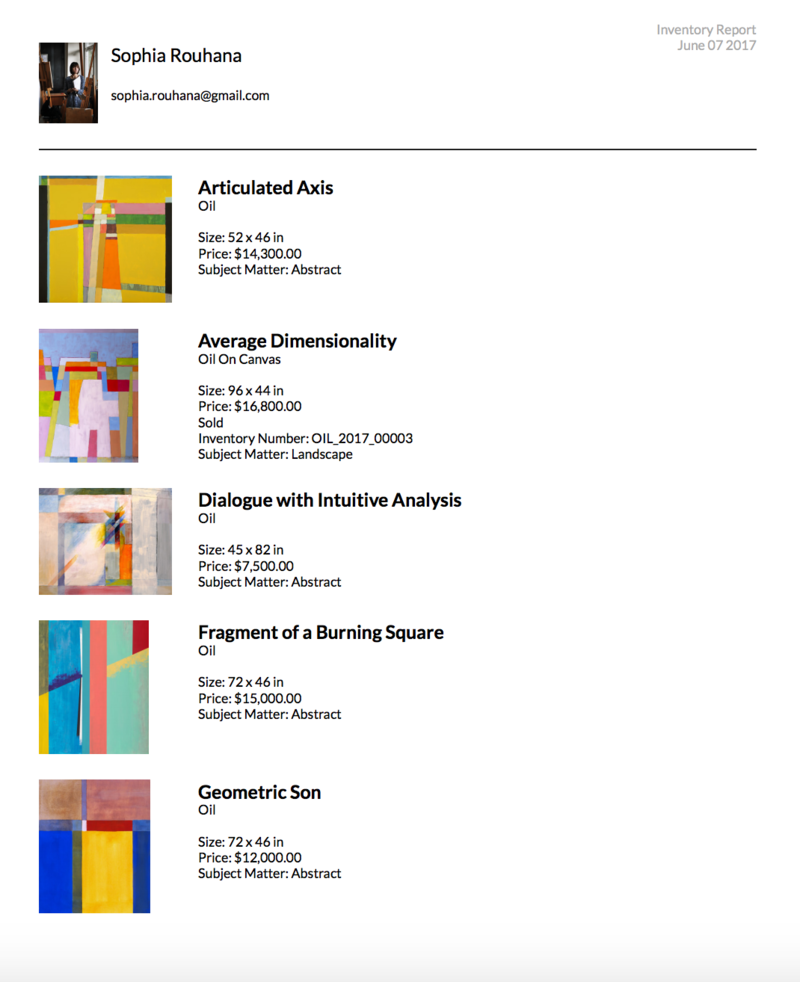Know you need to inventory your art, but don’t know where to start?
Inventorying your artwork helps to organize, strengthen, and streamline your art business. Plus, it isn’t the beast you think it is.
We’ve broken it down into ten simple steps to make it even easier.
So, turn on your favorite tunes, enlist some generous friends or family members, and set to inventorying your artwork.
You’ll be so glad you did and when you’re done you’ll have a living archive of every single piece you’ve ever made, all your business contacts, all the locations that have shown your art, and every competition you’ve ever entered all on Artwork Archive.
This organizational bliss will free you up to do more of what you love and sell more artwork!
Work Backward
It can seem overwhelming to inventory a career’s worth of art, so we recommend working backward. That way you’ll start with the art that is freshest in your mind–and the work you need to have details on hand for potential galleries and buyers. Then you can take a trip down memory lane and archive your past work.
Take High-Quality Photographs
While this may seem obvious, it is tempting to type in the title and dimensions of a piece and be done with it. Don’t fall for that trap! We all know artists are visual creatives and it is so important to have a visual reminder of your work.
As the years go by and the works amass, it can be easy to forget which painting goes with what title. It’s also nice to have beautiful, high-quality images of your work to send to interested art collectors, buyers, and galleries using the Artwork Archive inventory report or portfolio page feature.

Inventorying all your art with beautiful photos and the right information lets you send buyers and galleries what they need in a snap.
Number Your Work
It’s useful to have a numbering system in place so you can track your work chronologically and know the basic information just from the label. There is no one way to inventory your art, but there are plenty of great ideas out there if you don’t know where to start.
Artist Cedar Lee organizes her art by two digits for the number of the painting she painted that year, then a letter for the month (January is A, February is B, etc.), and two digits for the year. On her fantastic blog Art by Cedar, she writes “for example, there is a painting in my inventory with the control number 41J08. This tells me that it was the 41st painting of the year, created in October of 2008.” She begins again with number 1 and the letter A every January.
You can also add more detail such as a letter to signify the type or medium of the work like OP for oil painting, S for sculpture, EP for edition print, and so one. This would work well for an artist who creates in a variety of mediums.
Add-In the Right Details
You’ll need to record the title, dimensions, inventory number, creation date, price, medium, and subject matter to have a detailed catalog of the piece. You can also add in the framed dimensions if need be. You can upload up to 20 pieces at once using our Bulk Upload feature and fill in the title, inventory number, and price as they upload. Then you can add in the rest of the information. Next, comes the extra fun part – and no, we’re not joking.

Take Notes on Each Piece
Record the description of each piece as well as any notes for the piece. These can be thoughts you had while creating the artwork, inspirations, materials used, and if it was a gift or a commission.
You’ll get to relive the creation of each piece, reflect on past successes, and see how far you’ve come. Your notes will always be private in Artwork Archive and your description will only be made public if you mark a piece as “public”.
Assign Your Work to a Location
Once you’ve logged all your Pieces into the art inventory software you can assign each piece to a location. That way you’ll always know which gallery or venue is showing your work.
You’ll have the information at the ready if a buyer wants to purchase a piece that is outside of your studio and you’ll never accidentally send work to the same gallery twice. You’ll also know where all your art resides once it has been purchased whether it’s your hometown or an international location.
Add Important Contacts
Then you can add in important business contacts so you have the details of your art collectors, gallery owners, interior designers, museum curators, and art fair directors all in one place. That way you can access them anytime, anywhere as well as connect them to specific pieces within your inventory. You can keep them updated on your art career and mail personal thank you notes to your best buyers.

Add your contacts in so you can see who your best buyers are. Then you can notify them of new art they might like to purchase.
Register Sales
Next, you can register sales to specific contacts within your Artwork Archive account. You’ll know exactly who bought what, when, and for how much. That way you can notify them when you’ve created similar work and hopefully make another sale. You'll also gain sales insight this way to assist you with your business plans.
Record Competitions, Shows & Exhibition History
Having a log of all the competitions allows you to see which ones accepted your artwork and which ones awarded you a prize. Tracking your most successful pieces will help you to understand what jurors are looking for, so you can enter with better pieces every year.
Also, it certainly piques a buyer's interest if a work has won a competition, so you’ll want to have this titillating piece of information on hand to help a sale along.
Enjoy and Share Your Work
Once you’ve inventoried all your work, you can either view it all on the Pieces Page or turn on your Public Page and peruse a beautiful online gallery of your work. Then you can share it with buyers and collectors and sell more artwork. Our paid subscribers who have marked four or more pieces “public” are featured on Discovery, where buyers can contact them directly to purchase work. Better yet, artists handle the transactions and keep all the money!

Start organizing your art inventory with easy-to-use tools! Try Artwork Archive, free for 14 days, to build your business.









